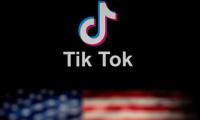NEW YORK: Depositors at some of the largest U.S. banks are finally going to get the chance to do something quick and simple: send money to another person's account instantaneously by mobile phone.
The idea has been in the works for at least five years, and in the meantime, Silicon Valley has made incursions into the industry's role as a payment intermediary. But now, big banks including JPMorgan Chase & Co, Bank of America Corp, Wells Fargo & Co and U.S. Bancorp are starting to plug into a system they jointly own, called clearXchange, that will allow each others' customers to transfer money in a flash when they split a dinner check, rent payment or vacation bill. "What we are doing now is delivering payments in real time, which is what our customers have asked for," Mary Harman, managing director for payments at Bank of America, said in an interview. The bank is one of two that have started rolling out the system to customers.
While technology companies like PayPal Holdings and Facebook Inc already offer snazzy payment apps that appeal to young consumers, the banking industry has a crucial advantage because it controls how quickly money actually moves between bank accounts. Individuals transferred some $200 billion to one another using mobile phones and computers last year, according to Javelin Strategy & Research.
Bank executives and analysts who closely track payment systems say that if clearXchange is fast, functional and user-friendly, banks can make up for lost ground.
Bank of America plans to announce on Wednesday that its customers can transfer funds instantly through clearXchange with customers of U.S. Bancorp, which said last week that it was plugged into the speediest part of the network. JPMorgan Chase & Co and Capital One Financial Corp representatives told Reuters they plan to offer the service later this year.
Analysts expect Wells Fargo & Co and PNC Financial Services Group Inc to do the same. Their representatives declined to comment.
Those six banks are among the seven largest by deposits in the United States. Regional bank BB&T Corp is also one of the seven owners of the network, but is not ready to announce its plans, a spokesman said.
Citigroup, which has the fourth most U.S. deposits, has not joined clearXchange. A spokeswoman declined to say why. Citigroup uses an older network called Popmoney, which is owned by Fiserv Inc, for person-to-person payments.
Today, if a customer wants to transfer cash to another person digitally — whether on an app like Paypal's Venmo, or through an individual bank's payment transfer system, like Chase's QuickPay — it usually takes one to three days for money to move to an account at another institution. On clearXchange, the cash can move instantaneously with the tap of a finger.The initiative is particularly important for banks as their customer base shifts from a generation that cashed paper checks and got mortgages by walking into a branch, to one that goes online first to transact and borrow. It's important for banks to cater to 18-to-34-year-old Americans in the so-called Millennial generation as they enter their prime years for borrowing and saving.
But adapting to these behavioral changes was a low priority for U.S. banks after the financial crisis, as they grappled with losses, fines, new regulations and slow revenue growth. In short order, financial technology startups filled the void — not just in payments, but in areas ranging from student loans to financial planning. If banks don't catch up quickly, they may end up losing some young customers altogether, analysts said.
"There is a short window of opportunity for the banks," said Michael Moeser, director of payments for Javelin.
For clearXchange to be successful, it needs to reach a critical mass of participants so that depositors will be able to transfer funds among most of their friends, relatives and colleagues. Until more banks connect to provide immediate service, the network has little value.
Any U.S. bank or credit union can participate in clearXchange, and its owners hope many more will. The network says its members represent two-thirds of U.S. deposits.
An image from the launch event of the Pakistan Pavilion for Expo 2025 Osaka's revelation in Kobe....
Federal Reserve Chair Jerome Powell. — AFP/File ARLINGTON: The recent tariffs introduced by President Donald...
Trucks loaded with shipping containers pass over Donghai Bridge to exit Yangshan Port outside of Shanghai, China,...
In this picture taken on July 20, 2023, a worker operates a machine preparing fabric at a textile mill in Lahore. —...
A hand is seen on a laptop with binary code displayed on the screen in front of Russian flag in this picture...
Traders work on the New York Stock Exchange floor in New York City, US on June 14, 2022. — ReutersLONDON/SINGAPORE:...







